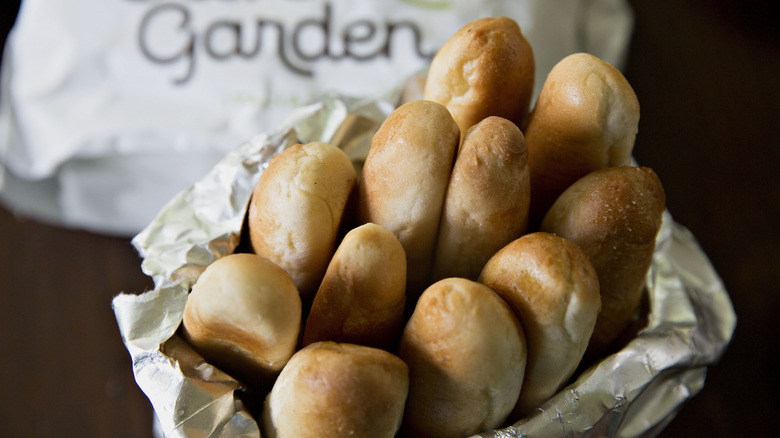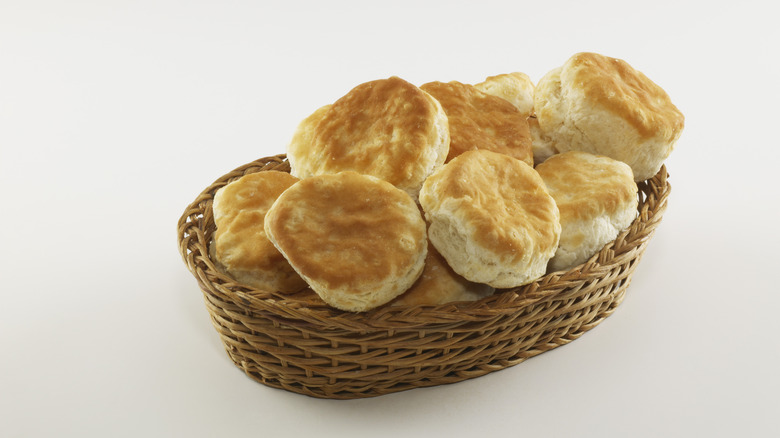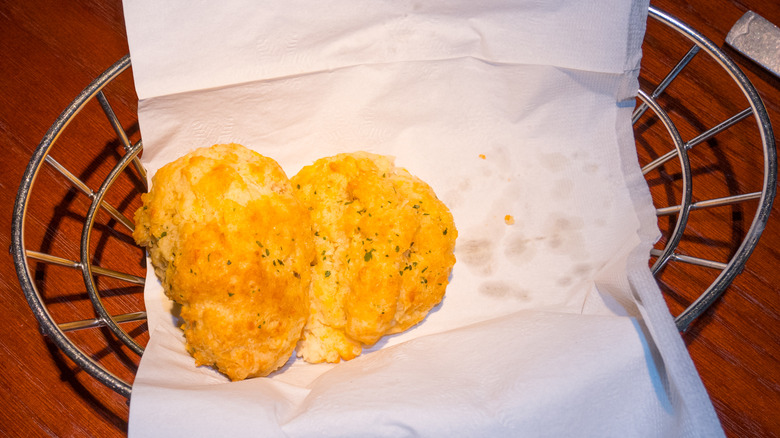Olive Garden's Breadsticks And Red Lobster's Biscuits Share An Unusual Policy
On a surface level, it's easy to discern that free restaurant bread tricks your brain into thinking you've scored a bargain. However, delving deeper into the murky underworld of "free" restaurant bread reveals much more strategy than you might expect. For instance, when you receive a basket of "never ending" bread at Olive Garden or "unlimited" Cheddar Bay Biscuits at Red Lobster, the restaurant gives you a specific number of breadsticks or biscuits — no more, no less.
Your first complimentary basket contains one piece of bread per person, plus one extra. Additional baskets are, of course, available upon request, but these contain only one piece of bread per person. This approach slows down diners' consumption of breadsticks or biscuits, especially as they fill up on other carb-heavy foods like pasta and potatoes. After all, the faster a restaurant can fill diners up, the less bread they eat. Sure, in the grand scheme of things, bread isn't that expensive, but every saved penny counts for restaurants striving to make a profit.
Why do restaurants offer diners free bread?
As mentioned, restaurants do what they can to limit how much bread each diner consumes, for a few reasons. One is to minimize waste. But also, since most restaurant bread is complimentary, the establishment is essentially taking a loss — and understandably they want to minimize that loss. Why, then, do restaurants still offer free bread at all?
To little surprise, the main reason is to keep diners placated and distracted while their entrees are being prepared. After all, on average, diners wait 23 minutes for their food to arrive, according to a study in FSR magazine, and that can feel like hours when you're hungry. Snacking on bread, however, can take the edge off hunger.
Another perk of free bread is the response it elicits from diners. We all love free food, so naturally, being generously given a full basket at a restaurant makes us feel warm and happy. In turn, diners may feel more inclined to leave a generous tip.
Complimentary bread is for the table, not for your home
Wanting to take extra breadsticks or biscuits home with you is understandable, but it's important to remember that complimentary bread is intended for in-restaurant consumption. In other words, you can eat as much bread as you like (within reason, of course) during your meal because you're still paying to be there.
However, like at a buffet, taking home food that isn't already half-eaten and thus destined for the trash can, at best, be considered just poor bread basket etiquette, or at worst, stealing. For this reason, many buffets have signs warning diners that they'll be charged for taking more food than they can eat in a single sitting. The fee you pay for your meal covers only what you can eat at the restaurant, not whatever you can fit into your purse or pockets.
To be clear, it's okay to take home breadsticks or biscuits that are already on your table, as they would otherwise be thrown out, but you shouldn't ask for a refill with the intention of taking it home. Restaurants don't appreciate being taken advantage of.



